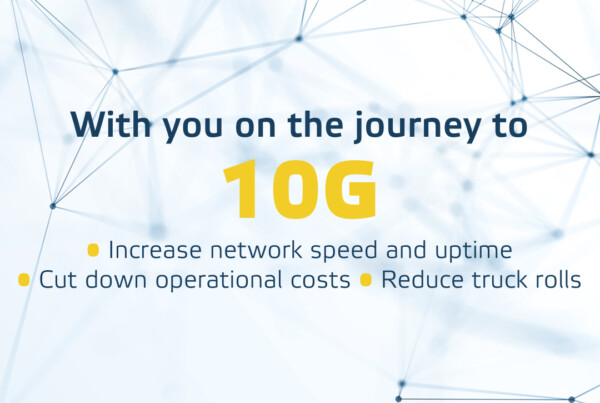Distributed access architecture (DAA) enables the evolution of cable networks by decentralizing and virtualizing headend and network functions.
DAA is a mandatory step for all coax-based network evolution strategies. It leads to 10G broadband speeds with the existing coaxial assets and enables automation through virtualization and next-generation telemetry tools.






